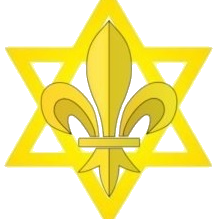The Torah is called “Oz,” meaning “Strength” or “Power” in Hebrew.
עז
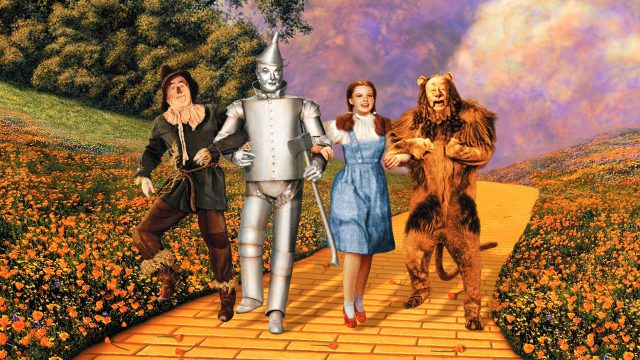
It’s a nice concept. However, at the end of the story, we discover that the Wizard of Oz is simply an impostor—a mere man without true power, using tricks to appear impressive.
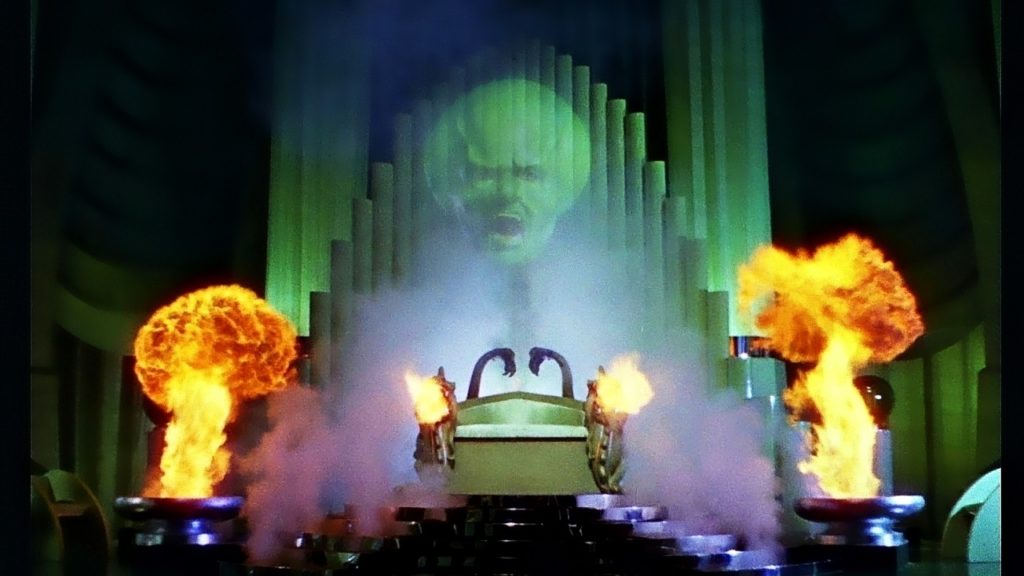
The story of the Wizard of Oz is an initiation journey: the Divine (the Force, not of the dark side, but Life, Truth, Infinite Love…) is not found outside in what appears powerful, but within each of us. This is what each main character learns.
The Divine Word is a small voice, the voice of a young girl, like Dorothy Gale, the heroine of the Wizard of Oz.
The root “Gal” (Gimel + Lamed) corresponds to Revelation (“Guilouy”).
גל
In 1928, public libraries in America censored The Wizard of Oz, claiming it “portrays strong female characters in leadership roles”. This inner voice, the voice of the Shechina, has always been within us. However, it calls for action, courage, going against the current to reveal the feminine aspect of the Divine, which is in exile and persecuted.
The “Wizard of Oz”, the false god of the Torah of exile, is menacing, jealous, proud, self-centered. He seeks to enslave people to his commands. He orders invasions, killing… But why?
Because God shuns glory, so humble that He veils Himself, appearing as a desert troll, a truly jealous and manipulative monster, not very kind to His people—a sort of mafia Godfather.

God hides behind a devilish mask, encouraging not monotheism but monolatry. This figure is the one God asks us to battle. Yes, the task of each of us in this world is to refine, purify God. Humanity should not merely pray but act: it is God who prays to humanity to act.
Originally, YHVH was a god of the South, coming from Midian, eastern Sinai, Edom, northern Arabia.
“The Lord appeared from Mount Sinai, shining on Seir for them! He revealed Himself from Mount Paran…” (Deuteronomy 33:2)
“Lord! When you came out of Seir, when you advanced from the region of Edom, the earth trembled, the heavens melted, and the clouds turned to water.” (Judges 5:4)
“The Lord came from Teman; the Holy One from Mount Paran, Selah! His splendor covers the heavens, and His glory fills the earth.” (Habakkuk 3:3)
YHVH is a god of storms, thunder, a god of arid lands—a warrior god, tribal in nature. He came from a region crossed by many caravans of merchants. YHVH also came from the land of the Shasu. It was a place where many groups clashed with Egyptian authorities before gaining independence at the end of the Bronze Age, the time when YHVH first appeared.
The Canaanites, ancestors of the Jews, worshipped the god EL, a benevolent sky god often depicted as a wise, bearded old man. They also worshipped Baal, but gradually adopted the worship of YHVH, who eventually replaced Baal, now seen as an enemy due to his similarity to YHVH.
This drawing, found at Kuntillet Ajrud in northeastern Sinai and made about 3000 years ago, depicts YHVH, Baal, and Asherah according to the inscriptions. These people were not gifted artists—what a horror! It’s easy to understand the biblical prohibition of any representation of YHVH.
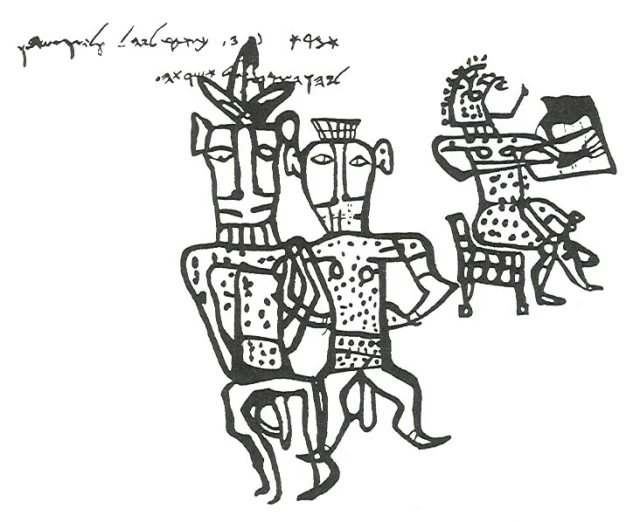
YHVH was not originally the universally benevolent God conveyed by major monotheistic religions. For followers of these religions to stop fighting each other, they must realize their holy books are simply fables, myths.
Jews should recognize they know YHVH thanks to the Arabs. Christians should realize they know the Messiah concept thanks to the Jews. Muslims, in turn, should realize they know Muhammad thanks to the Christians. The Quran is a fable written long after the death of a figure portrayed as a prophet-warrior, who was, above all, a kind of Christian priest, a Nazarene.
For centuries, antisemites accused Jews of “Satanism”. Yet, in reality, the Jews are the most persecuted in this story—by both the forces below and the forces above.
“Israel” means “One Who Struggles with God”:
“Your name will no longer be Jacob, but Israel, because you have struggled with celestial and human powers and remained strong.” (Genesis 32:29)
The Torah is called Oz. Because truth can be painful. Because the true Torah is acquired by fighting oppressive forces, including this “YHVH.”
We must leave Egypt, the world of illusion, to reach Is Real.
“There was evening and there was morning”—everything begins in darkness, and each person’s task is to transform this darkness into Light, to transform YHVH, the brutal desert god, into a Universal God. Rudra becoming Shiva is another example of humanity’s work in refining their vision of the Divine.
God is the source of all the world’s evil, which He created by Tsimtsum (withdrawing Himself), which is, when you think about it, the most terrible thing imaginable.
“In the beginning, God created the Heavens and the Earth.” (Genesis 1:1)
בראשית ברא אלהים את השמים ואת הארץ
The ordinal gematria of the verse = 329
= gematria of “Demiurgos” (“Demiurge,” the “Creator of the Universe”)
דמיורגוס
God is humble. He does not want to be idolized. He is so humble that He disguises Himself as YHVH—as the Wizard of Oz, the desert troll, the devil, the mafia godfather, and even a donkey.
It is said that the Messiah will come “on a donkey.” The donkey represents matter (“Chomer” in Hebrew, the same root as “Chamor,” Donkey), matter that each person must refine, revealing the spiritual in the material world…
YHVH is a storm god, and storms mean clouds. According to the Talmud (Sanhedrin 98a), the Messiah will come either on an “Âne” (“Donkey” in French) or on a “Anane” (“Cloud” in Hebrew).
According to ancient stories, Jews worshipped a donkey in secret within the Temple. For instance:
“For Apion dared to say that in this sanctuary, the Jews had erected the head of a donkey (asini caput) and worshiped this animal, considering it worthy of the highest worship. He claims that this was revealed when Antiochus Epiphanes pillaged the temple and discovered this head, made of gold and worth a considerable sum of money.” (Flavius Josephus, Against Apion)
We don’t know if this was true, as there were already many antisemites back then who could have spread such rumors.
Yet there is some truth in it. After all, God hides in matter…
#Yahoo #Search
In ancient Egypt, the donkey represented the god Seth, the god of foreigners, the desert, storms, bloodthirsty and violent. Given the stories of the Exodus, it’s understandable that they associated him with the god of the Hebrews.
Seth was the god of the Hyksos, whose history likely inspired certain biblical stories and characters.
#JediVsSith
Seth is associated with Typhon, Cronos, Satan, but also with Saturn (“Shabbtai” in Hebrew), a planet associated with the Jews. Plutarch and Tacitus wrote that Typhon founded Jerusalem and Judea. The false messiah Shabbetai Tzvi succeeded because, according to some traditions, the Messiah would be linked to Saturn (see Moshe Idel’s book Saturn’s Jews: On the Witches’ Sabbat and Sabbateanism). It’s a planet tied to hidden things. In the Middle Ages, “witches” were accused of going to the “sabbat”…
#OZzy #BlackSabbath
The name of God YHVH was pronounced “Yao” (ΙΑΩ) by the Greeks, and it resembled the bray of a donkey. Moreover, “Yao” meant “Donkey” in Egyptian.
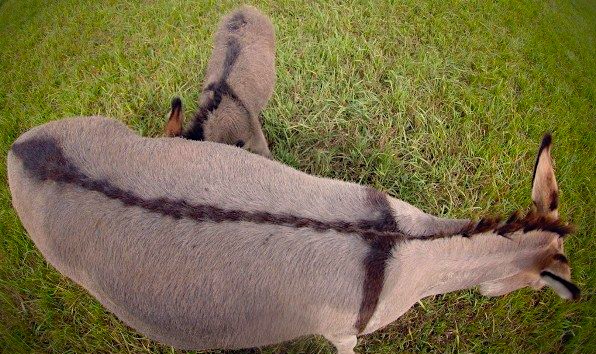
The donkey bears a cross on its back.
The donkey also appears in the first known depiction of the false messiah Jesus (the Alexamenos Graffito). Interestingly, the English word “Ass” means both “Donkey” and “Buttocks.” Here’s your god, fool!
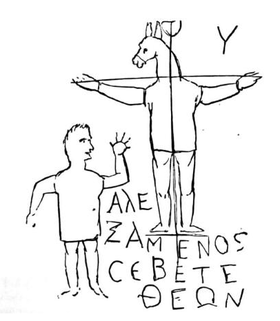
#AssHoly
YHVH is “Y’avait” (“There Was” in French) —the verb “To Have” in the past tense.
Who is God? He is not “Y’avait”; He is above all “Ehyeh”: “I Will Be.”
#SecretOfTheVerb
“Moses said to God, ‘When I come to the children of Israel and say to them, “The God of your fathers sent me to you,” and they say to me, “What is His name?” what shall I say to them?’ God answered Moses, ‘I Will Be Who I Will Be’ (EHYEH ASHER EHYEH).” (Exodus 3:13-14)
God will be what He will be. He is within us. It is up to us to reveal the verb “To Be.” God is within us and will be what we make of Him.
“Ose !” (“Dare” in French)
#Abracadabra
